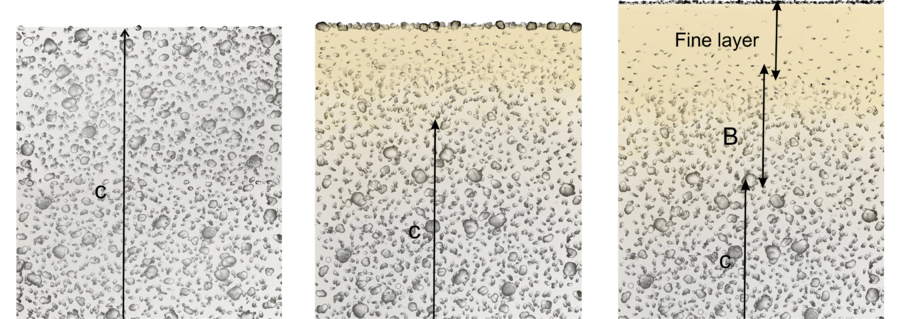Desert pavement facts for kids

A desert pavement is a special kind of flat, rocky surface found in deserts. Imagine a ground covered tightly with lots of small, angular or rounded rocks, like pebbles and cobbles, all fitting together like a puzzle. These pavements often form on top of alluvial fans, which are fan-shaped deposits of sediment. Over time, a dark, shiny coating called desert varnish can form on the rocks.
People who study geology, called geologists, have different ideas about how these pavements form and how old they are.
Contents
How Desert Pavements Form
Scientists have come up with a few ideas to explain how desert pavements are made.
Wind and Water Action
One common idea is that desert pavements form when wind and rain slowly remove tiny bits of sand, dust, and other fine dirt. This leaves the larger rocks behind. Over time, forces like rain, running water, wind, and even small microseismic vibrations from the Earth shake these larger rocks into place.
Once the pavement forms, it acts like a protective shield. It stops the wind from blowing away more of the small particles. These tiny particles then collect underneath the rocky surface, forming a special layer of soil.
Expanding Clay
Another idea suggests that desert pavements form because of how clay behaves underground. When clay gets wet from rain, it expands. When it dries, it shrinks and cracks. This constant expanding and shrinking can push small pebbles up to the surface. Since there isn't much rain in deserts, these rocks tend to stay on the surface.
Rocks Born at the Surface
A newer idea comes from studies in places like Cima Dome in the Mojave Desert in California. Scientists like Stephen Wells studied areas where new lava flows were covered by layers of soil, with desert pavement on top. The rocks in the pavement were from the same lava.
What they found was surprising: the soil underneath the pavement had actually built up, not been blown away. And there were no small stones in the soil itself.
To figure out how long the rocks had been exposed, Wells used a special method. He measured a substance called helium-3 in the rocks. Helium-3 builds up when rocks are hit by cosmic rays from space. His measurements showed that the lava rocks in the desert pavement had been on the surface for the same amount of time as the solid lava flows next to them.
This led him to conclude that "stone pavements are born at the surface." This means that as wind blows dust onto the desert, the soil builds up underneath the pavement, but the rocks stay on top. For geologists, this is important because the dust trapped under the pavement can tell us about ancient climates, just like dust found in the deep ocean or in ice caps.
Desert Varnish
Many desert pavement surfaces are covered with desert varnish. This is a dark brown, sometimes shiny, coating that contains tiny clay minerals, iron, and manganese. It's like a natural paint on the rocks. Scientists think tiny living things called micro-organisms might also help it form. A famous example in the USA is on Newspaper Rock in southeastern Utah.
Local Names for Stony Deserts
Stony deserts, like those with desert pavements, are known by different names around the world.
- Gibbers: In Australia, large areas of desert pavement are called Gibber Plains. The small rocks themselves are called gibbers. You might also hear about "Gibber Chenopod Shrublands," which describes the plants that grow in these areas.
- Reg: In North Africa, a huge stony desert plain is known as a reg. This is different from an erg, which is a sandy desert area with lots of sand dunes.

See also
 In Spanish: Pavimento desértico para niños
In Spanish: Pavimento desértico para niños
- Aeolian processes
- Desert varnish
- Erg
- Hamada
- Saltation (geology)
- Ventifact
zh:岩漠



